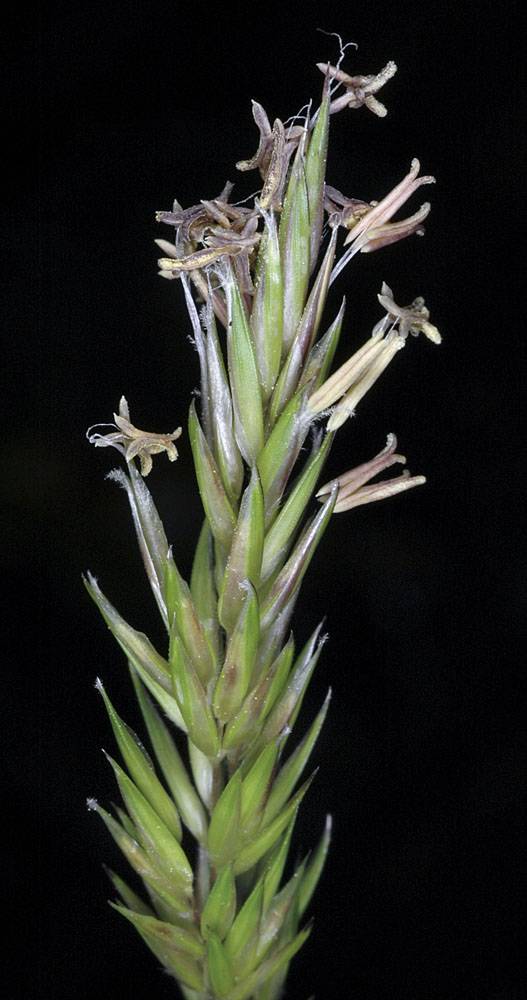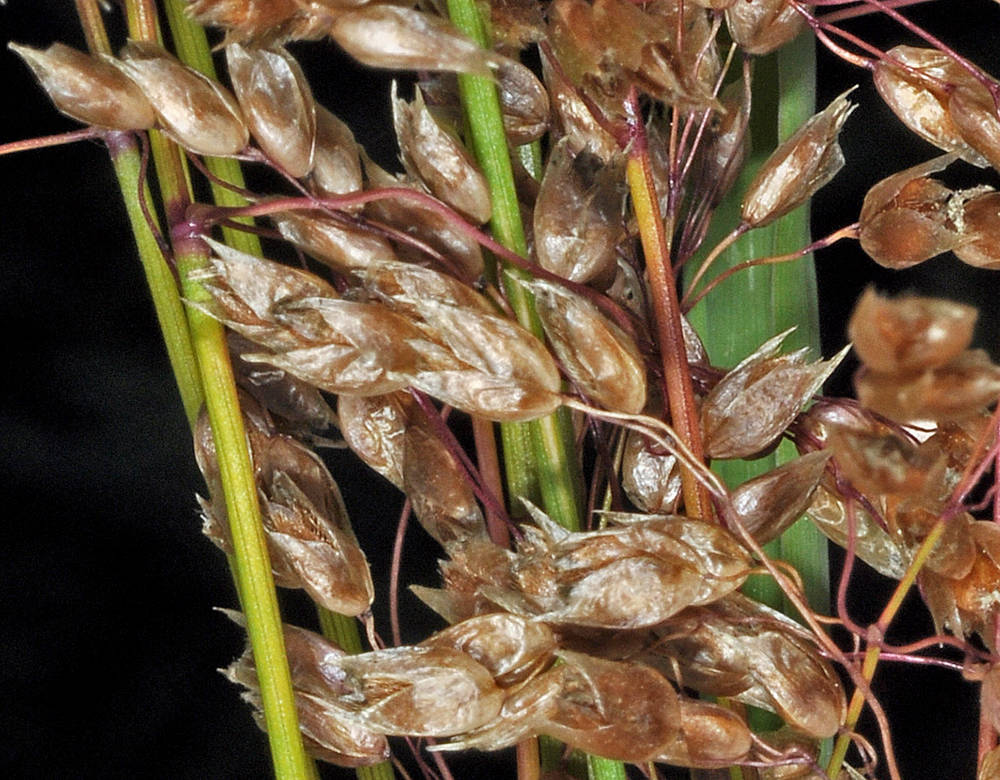Anthoxanthum odoratum
Hierochloe odorata
(synonym of Anthoxanthum nitens)
sweet vernalgrass
hairy sweetgrass, vanilla grass
erect or ascending.
auricles 0.5–1 mm, pubescent;
ligules 2–7 mm, truncate;
blades 1–31 cm × 3–10 mm.
blades to 25 cm on sterile shoots; much reduced on culms, 2.5–5.5 mm wide, narrowed at the base; dorsal surfaces glabrous and shiny; ventral surfaces hairy; flag leaves 1–3(6)cm × 3–4.5 mm.
dense; spike-like; (3)4–14 × 0.7–1.8 cm, often widest near the base; lowest branches 1–2.5 cm.
(5)7.5–15 cm; open.
6–10 mm.
4–6.3 mm.
unequal, exceeding the florets;
lower glumes 3–4 mm, 1(3)-veined;
upper glumes 7–10 mm, 3-veined.
4–6.3 mm; ovate, exceeding the florets, glabrous; hyaline and more or less transparent, white to light brown, tinged with green or purple on the back near the base.
lower 2 staminate, 3–4 mm, pubescent;
tips awned;
lemma awns of lowest lemma about 3 mm, arising near or above mid-length; straight or bent, those of the second lemma 7–10 mm, arising near the base; bent and twisted, equaling or slightly longer than upper glumes; upper lemmas bisexual, 1–2.5 mm; hard, glabrous, brown;
tips acute; awnless.
lower lemmas staminate, 3–5 × 1.1–1.5 mm; length/width ratio usually less than 4; more or less hairy all over, with hairs 0.5–1 mm on margins; to 0.5 mm toward the tips;
tips acute to awned, awns of lower lemmas 0.1–1 mm; upper lemmas bisexual, 2.9– 3.5 mm; shiny; hard; hairy distally; the hairs 0.5–1 mm and with bases strongly divergent from the lemma surface; acute.
(2.9)3.5–4.8(5.5)mm.
1.6–2.1 mm in lower, staminate florets, 1.2–1.3 mm in upper; bisexual florets.
=10, 20.
Anthoxanthum odoratum
Hierochloe odorata
Meadows, roadsides, waste places, openings in coniferous forests, occasionally in dense shade. 0–1700m. BW, Casc, CR, ECas, Est, Sisk, WV. CA, ID, WA; scattered throughout North America; worldwide. Exotic.
This abundant weed of grasslands blooms early in the spring and is recognized by its dense, pointed spikes. Similar A. aristatum is an annual with proportionately longer awns.
Wet meadows and freshwater marshes. 600–2200m. BW, Casc, ECas, Sisk. CA, ID, NV, WA; north to AK, east to Greenland; northeastern US. Native.
Hierochloë odorata is recognized by its more or less round spikelets with almost transparent glumes surrounding hairy brown lemmas. Its culm leaves are disproportionately small. It is very similar to H. occidentalis, which has broader leaves, longer flag leaves, and more open panicles.
Barbara Wilson, Richard Brainerd, Nick Otting
Barbara Wilson
- Local floras:
BC,
CA,
OR,
WA
- Local Web sites:
CalFlora,
CalPhotos,
Flora NW,
PNW Herbaria
WildflowerSearch
iNaturalist (observations)
USDA Plants Database
- LBJ Wildflower Center
- SEINet
- Plants of the World Online
- Encyclopedia of Life
- Wikipedia
- Google Image Search





